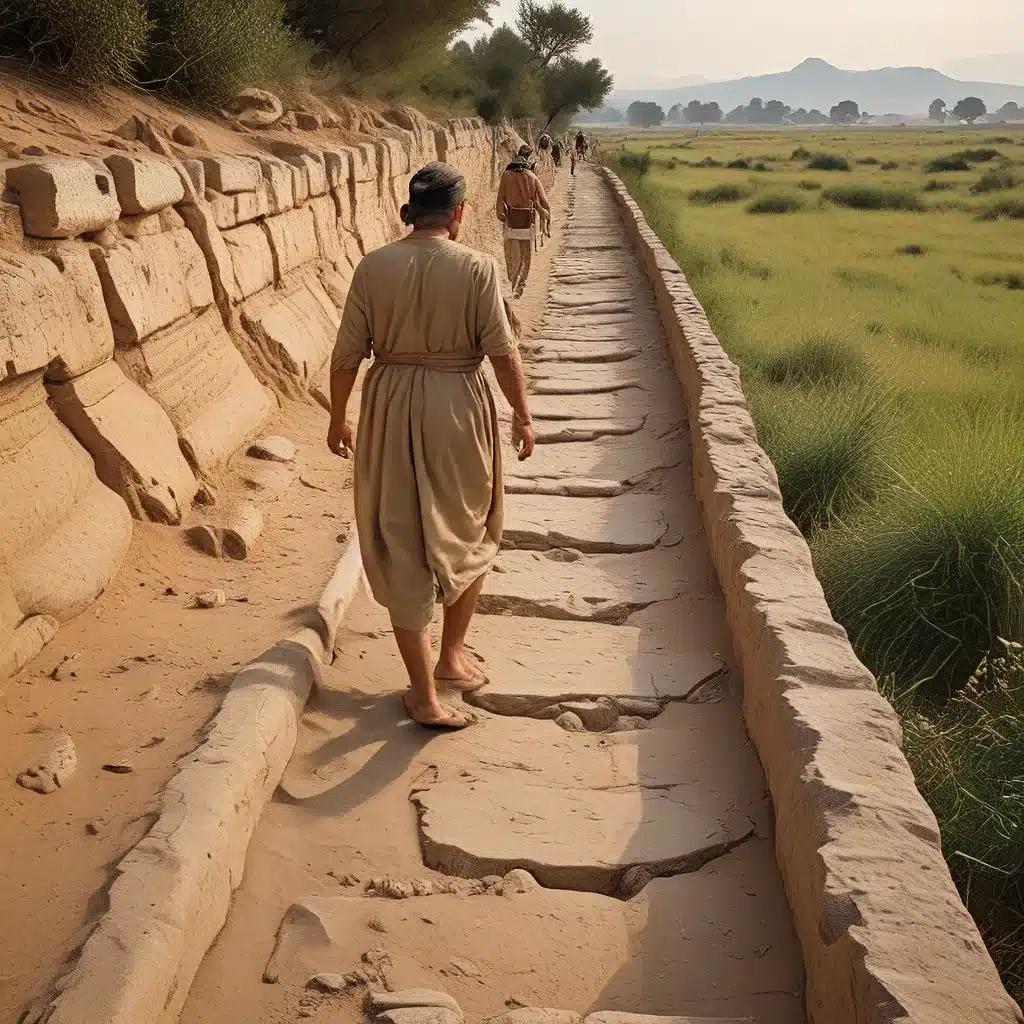
Ancient civilizations have long captivated our collective imagination, leaving behind tantalizing clues about their ways of life, beliefs, and movements across vast landscapes. Archaeology, the study of human activity through the recovery and analysis of material culture, has played a crucial role in unraveling the mysteries of these bygone eras. In recent decades, a growing focus on trail networks and travel corridors has shed new light on the interconnectedness of ancient cultures and the remarkable feats of human mobility that shaped the course of history.
Uncovering the Trails of the Southwest
One region that has witnessed a surge of interest in ancient trail systems is the American Southwest, a vast and diverse landscape that has long been home to a rich tapestry of indigenous cultures. Archaeologists working in this region have uncovered an abundance of evidence that highlights the importance of movement and travel in the daily lives of these ancient peoples.
The Oodham Salt Pilgrimages, for example, were annual journeys undertaken by the Oodham people to the shores of the Gulf of California in search of salt, a precious commodity in their arid environment. These treks could take anywhere from 4 to 12 days to complete, depending on the starting point, and required a deep understanding of the land, its resources, and the routes that connected distant communities.
Similarly, the early-19th-century migration of the Xalychidom, Kohuana, and Halyikwamai communities from the lower Colorado River valley to the middle Gila River valley, and even as far as northern Sonora, Mexico, showcases the remarkable mobility of these ancient peoples. The ability to traverse vast distances on foot, while navigating challenging terrain and climate, speaks to the remarkable physical and spiritual endurance of these travelers.
Mapping the Invisible: Tracing Ancient Trails
Despite the wealth of evidence that ancient peoples were highly mobile, the physical traces of their trails and travel corridors can be elusive, as archaeologist Aaron Wright explains. “In most places, studying how people moved about the landscape is a largely conjectural enterprise because footpaths don’t preserve well except in very specific environmental contexts.”
One such context is the desert pavements found in the southern Southwest, where the archaeological landscape has been likened to a “thin” tapestry of pottery shards, petroglyphs, and the occasional lost projectile point. It is in these environments that archaeologists have been able to map and study the remnants of indigenous trail networks, which often served as precursors to modern transportation routes.
Rediscovering the Gila River Trail
A prime example of this archaeological detective work is the ongoing effort to trace the Gila River Trail, a major transportation corridor that connected communities along the Gila River and its tributaries in the Southwest. As described by Aaron Wright, this trail likely followed ancient indigenous routes, as evidenced by the accounts of early explorers like Father Kino and Juan Mateo Manje, who were guided by local Oodham communities.
Through a combination of historical records, collaborative research with indigenous communities, and meticulous field surveys, archaeologists have been able to piece together the trajectory of the Gila River Trail, which appears to have extended from the Oodham village of Oohia Daiwush on the lower Gila River, traversed the Maricopa Mountains, and ultimately connected to the village of Komatke on the middle Gila River.
Uncovering Treasures Along the Trail
The process of tracing this ancient trail has not only provided valuable insights into the mobility and interconnectedness of past cultures, but has also yielded remarkable archaeological finds that give us a tangible connection to the lives of those who walked these paths centuries ago.
During a recent survey of the trail, the research team led by Aaron Wright and Bill Doelle discovered a remarkable artifact: a painted schist pendant that had likely fallen from the necklace of a traveler, lost and forgotten along the way. This serendipitous find, lying undisturbed for who knows how long, serves as a poignant reminder of the deeply personal experiences and connections that these ancient trails once facilitated.
Connecting the Dots: Piecing Together the Past
As the exploration of the Gila River Trail continues, archaeologists are not only uncovering the physical evidence of these ancient travel corridors, but also piecing together the cultural significance of these pathways and the communities that they served. By collaborating with local indigenous groups, such as the Akimel O’odham and Pee-Posh communities, researchers are gaining a deeper understanding of the cognitive maps and song cycles that were embedded in these ancient trail networks.
This holistic approach to studying ancient mobility and travel networks is not only shedding light on the complexities of past civilizations, but is also informing modern land management practices and fostering deeper connections between contemporary communities and their shared ancestral landscapes.
Exploring the Trails of the Past, Informing the Future
As we continue to unravel the mysteries of ancient civilizations, the study of trail networks and travel corridors has emerged as a powerful lens through which we can better understand the remarkable feats of human mobility, the interconnectedness of past cultures, and the lasting legacies that these ancient pathways have left on the modern world.
Whether it’s the Oodham salt pilgrimages, the Xalychidom migration, or the elusive Gila River Trail, these ancient footsteps have much to teach us about the resilience, adaptability, and ingenuity of our ancestors. By tracing these forgotten trails, we not only honor the past, but also illuminate the enduring spirit of exploration and discovery that has always been a fundamental part of the human experience.
As you explore The Lost Kingdoms, we invite you to discover the hidden stories that lie within the footprints of these ancient civilizations, and to contemplate the profound ways in which the past continues to shape the present and future.


